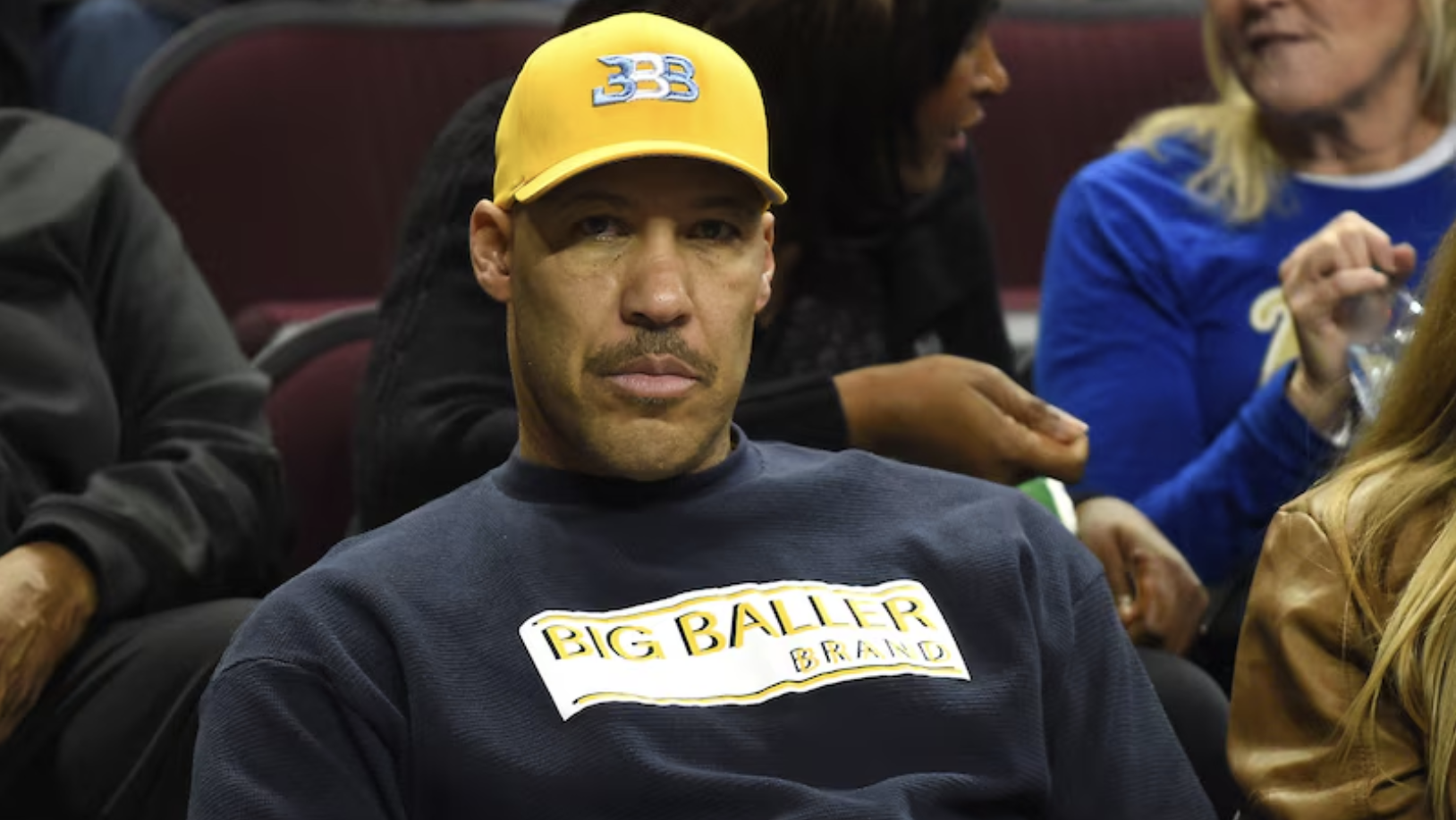
The Man Who Changed Sports Media Forever

LaVar Ball is an American businessman, media personality, and the father of three NBA players who became one of the most polarizing figures in modern sports culture. Born on October 23, 1967, Ball transformed from a modest college basketball player into a master of self-promotion and sports branding.
Quick Facts About LaVar Ball:
- Father of: Lonzo Ball (NBA), LiAngelo Ball (musician/former player), LaMelo Ball (NBA)
- Business: Founder and CEO of Big Baller Brand
- Playing Career: Averaged 2.2 points and 2.3 rebounds at Washington State
- Recent Health: Right foot amputated due to diabetes complications in 2024
- Famous For: Bold claims, media feuds, and athlete branding
Ball gained national attention through his outrageous statements, including his claim that he could beat Michael Jordan one-on-one and his prediction that his sons would all become NBA stars. His Big Baller Brand launched in 2016 with $495 signature shoes, challenging traditional sneaker industry models.
Most Notable Controversies:
- Feud with President Donald Trump over his son’s arrest in China
- Criticism of NBA coaches, particularly the Lakers’ Luke Walton
- Sexist comments toward female reporters
- Business disputes and financial challenges with Big Baller Brand
The Ball patriarch recently faced serious health challenges, spending over a month hospitalized with diabetes complications that led to his foot amputation. Despite this setback, he maintains his trademark confidence, telling reporters “Don’t feel sorry for me” and “My foot is gone, but my brain is still here.”
As R. Couri Hay, I’ve observed LaVar Ball‘s impact on New York’s sports media landscape firsthand, watching how his bold approach to athlete branding influenced conversations in our city’s elite circles. His story offers fascinating insights into modern celebrity culture, family dynamics, and the intersection of sports and entertainment that resonates throughout New York’s high-society scene.
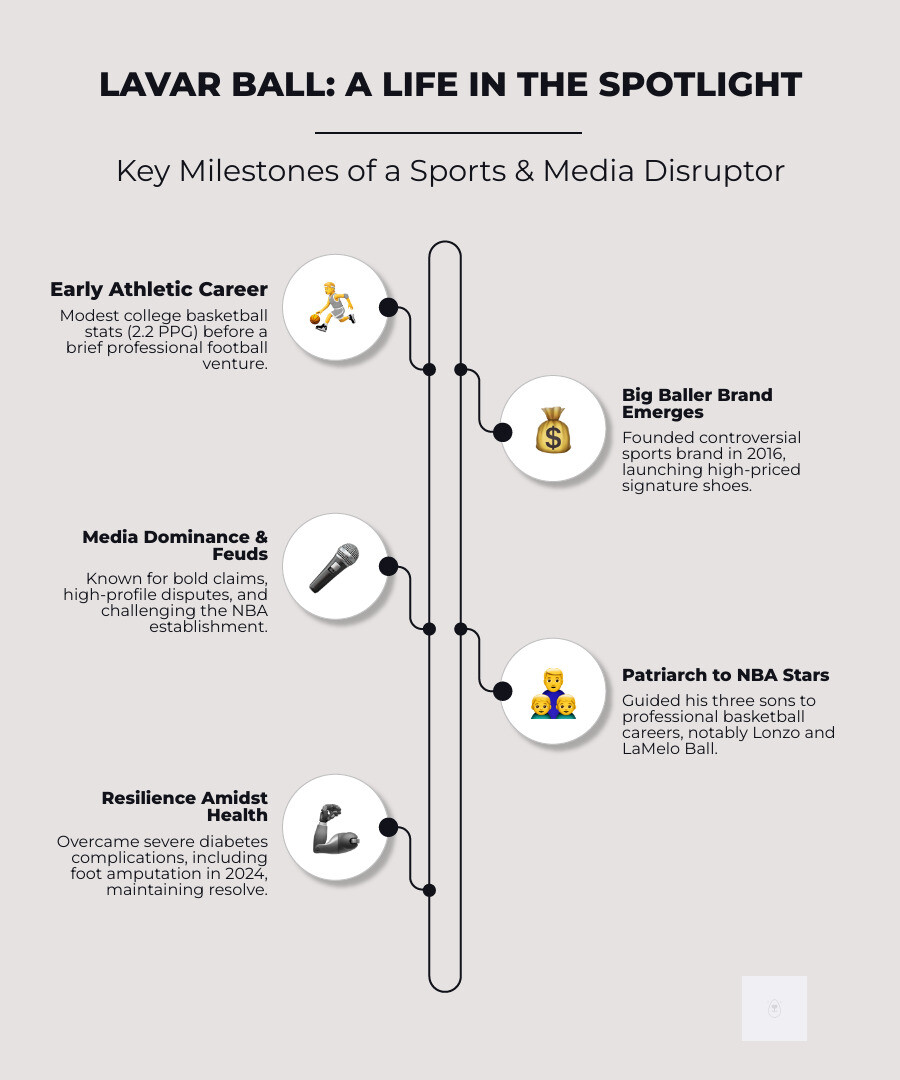
Lavar ball terms to know:
From Athlete to Architect: LaVar’s Early Career
Every sports media mogul has an origin story, and LaVar Ball‘s journey from modest college athlete to business mastermind is particularly fascinating. Long before he was making headlines in New York’s sports media circles, he was grinding it out on basketball courts and football fields, learning lessons that would later shape his approach to building his sons’ careers.
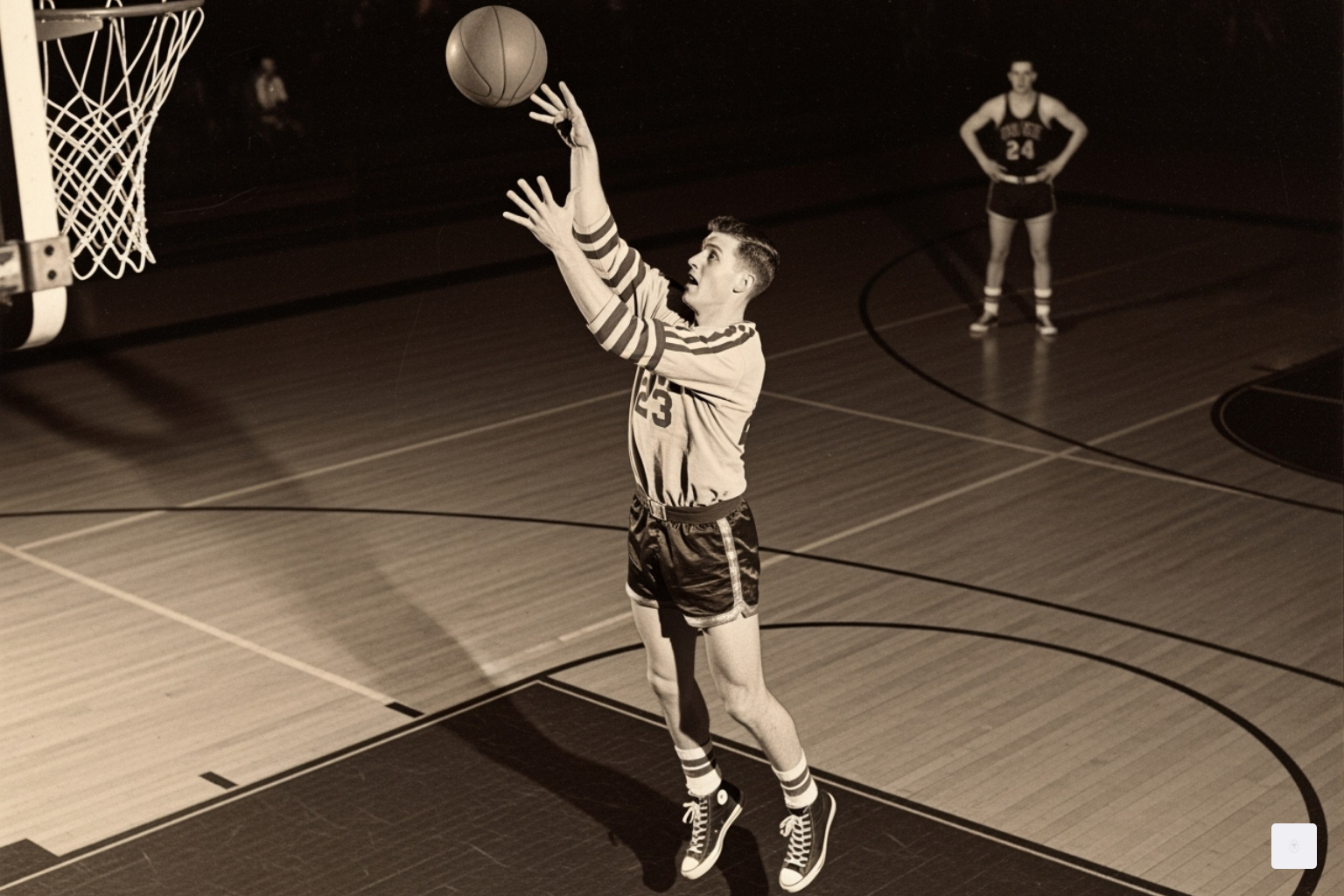
College Hoops and Humble Stats
LaVar Ball‘s college basketball career was a tale of persistence rather than stardom. He bounced between three schools – West Los Angeles College, Washington State University, and Cal State Los Angeles – each stop teaching him something different about the game and about himself.
His most documented stint came at Washington State, where the numbers tell a story of a role player rather than a superstar. Over 26 games, he averaged 2.2 points per game and 2.3 rebounds per game, shooting 40.4% from the field in just 11.5 minutes per game. These aren’t the stats of someone destined for NBA greatness, but they represent something more valuable – the experience of competing at a high level.
What’s interesting is how his performance varied at different levels. At West Los Angeles College during the 1986-1987 season, LaVar Ball averaged a much more impressive 22.2 points and 12.0 rebounds. His career-high performance of 33 points and 18 rebounds against Porterville College showed flashes of the confidence that would later define his public persona.
The full picture of his college career can be found on his Player statistics page, which reveals a player who understood his role at each level. This experience would prove invaluable when guiding his sons through their own basketball journeys.
A Brief Stint in Professional Football
Basketball wasn’t LaVar Ball‘s only athletic pursuit. His brief venture into professional football showcased the relentless ambition that New York sports fans would later come to know well.
In 1995, he earned spots on the practice squads of both the New York Jets and the Carolina Panthers. While he never made it to a regular season roster, his time with the Jets gave him exposure to New York City’s intense sports culture and media environment. This early taste of professional athletics in the nation’s biggest media market likely influenced his later understanding of how to work the press.
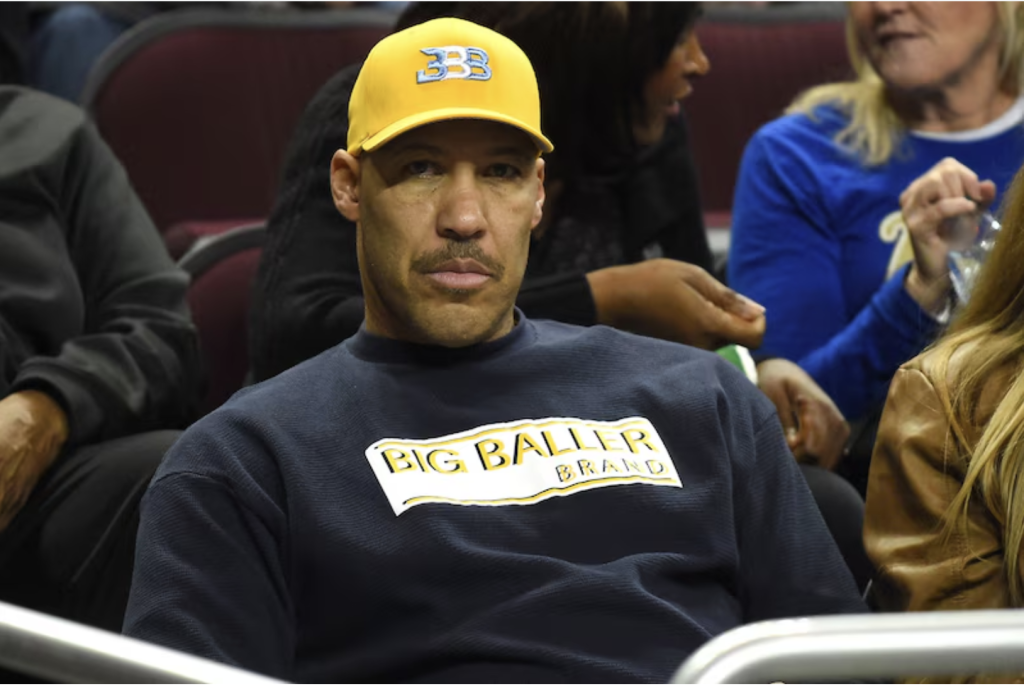
His football journey also took him overseas, where he played for the London Monarchs in the World League of American Football. There, he recorded 28 kickoff return yards – not spectacular numbers, but proof of his willingness to chase his athletic dreams wherever they led.
This dual-sport background reveals something crucial about LaVar Ball‘s character. He wasn’t content to accept limitations, whether in basketball or football. That same drive to compete at the highest levels – the same spirit that led him to pursue professional sports in multiple disciplines – would later fuel his determination to see his sons succeed where he couldn’t.
Looking back, these early athletic experiences weren’t just about personal achievement. They were LaVar Ball‘s graduate school in understanding professional sports, media attention, and the business of athletics – knowledge he would later use to revolutionize how athlete families approach branding and self-promotion.
The Rise of the “Big Baller”: Business and Branding
LaVar Ball didn’t just raise NBA stars—he revolutionized how families could brand themselves in professional sports. His change from a modest college player to a marketing mastermind created waves that reached far beyond basketball courts, even capturing attention in New York City’s competitive business landscape.
The Big Baller Brand (BBB) Phenomenon
When LaVar Ball and his wife Tina launched Big Baller Brand in 2016, they didn’t just start a company—they started a movement. The brand produced everything from clothing to footwear, but it was their audacious pricing that made headlines around the world.
The ZO2 signature shoe for Lonzo Ball carried a staggering $495 price tag. Autographed versions reached $900, while LaMelo’s MB1 shoes cost $395. Critics called it outrageous, but LaVar Ball had a simple response: if you couldn’t afford them, you weren’t a “BIG BALLER!”
This bold strategy actually worked in some ways. Lonzo became the only player in NBA history to enter the draft wearing his own family’s brand. That’s the kind of marketing breakthrough that would impress even New York’s most seasoned brand executives.
But success came with serious challenges. Business disputes emerged, particularly with partner Alan Foster, leading to financial troubles that would plague the company. The brand’s website eventually went dark, and products became nearly impossible to find.
LaVar Ball defended his pricing by comparing BBB products to luxury brands like Yeezys and Versace. While the brand ultimately struggled, it proved that a family could challenge the traditional sneaker industry—at least temporarily. The rise and fall of BBB offers valuable lessons about brand building, even in sophisticated markets like New York’s fashion scene.
The JBA and International Experiment
Never one to accept the status quo, LaVar Ball founded the Junior Basketball Association in 2017. The JBA offered an alternative to college basketball, paying high school players between $3,000 and $10,000 per month. It was his answer to the NCAA’s strict amateurism rules.
The league featured 80 players and generated significant media buzz. LiAngelo Ball even won the JBA All-Star Game MVP Award in 2018. Despite the initial excitement, the JBA proved short-lived, failing to establish itself as a viable alternative to traditional college basketball.
LaVar Ball’s most dramatic move came in 2018 when he took LiAngelo and LaMelo to Lithuania to play professionally for BC Prienai. This international experiment created a media frenzy, though not always for positive reasons.
The Lithuanian experience highlighted the tension between LaVar Ball’s promotional instincts and serious basketball development. One Lithuanian coach reportedly said the Ball family “came for the show, not for basketball.” His hands-on coaching approach during this period drew criticism from those who felt he prioritized brand promotion over team success.
While the Lithuanian trip raised eyebrows, it kept the Ball family in the global spotlight. The move sparked conversations even in New York’s sports circles about unconventional paths to professional athletics. Whether you loved it or hated it, LaVar Ball had once again proven his ability to generate headlines and challenge traditional thinking about athlete development.
The Master of Headlines: LaVar Ball in the Media
If there’s one thing LaVar Ball excels at, it’s capturing headlines. His public persona is a carefully crafted mix of confidence, controversy, and unshakeable belief in his family. He has consistently used media platforms to amplify his voice, often sparking debates that ripple through sports culture from Los Angeles to New York City’s busy media landscape.
Outrageous Claims and Famous Feuds
LaVar Ball transformed himself into a household name through bold declarations that made sports commentators either laugh or cringe. His most famous claim? That he could beat Michael Jordan one-on-one “back in his heyday.” The statement went viral instantly, creating endless debate across social media and sports shows.
He didn’t stop there. LaVar Ball boldly proclaimed that Lonzo Ball was already better than Stephen Curry and would single-handedly lead the Lakers to the playoffs in his rookie year. While critics dismissed these statements as outrageous, they were incredibly effective at keeping the Ball family in the spotlight.
The most explosive feud came when LaVar Ball clashed with then-President Donald Trump. After LiAngelo Ball and two UCLA teammates were arrested for shoplifting in China, Trump claimed credit for securing their release. LaVar Ball‘s response was characteristically blunt: “Who? What was he over there for? Don’t tell me nothing.”
This public spat escalated quickly, with Trump calling LaVar Ball an “ungrateful fool” on Twitter. LaVar Ball later suggested that Trump lost the 2020 election partly because of their feud. The back-and-forth captivated audiences nationwide, turning a sports story into front-page news that dominated conversations in New York’s media circles and beyond.
Clashes with the NBA Establishment
LaVar Ball never hesitated to criticize NBA coaches, especially when it came to his sons’ playing time. His most public target was Luke Walton, the Los Angeles Lakers’ head coach during Lonzo’s rookie season. He openly questioned Walton’s coaching decisions and complained about how the team was using Lonzo.
These public criticisms created awkward situations for the Lakers organization. Reports suggested the team even implemented a “LaVar Ball Rule” to prevent family members from speaking with media at home games. The disruption was real, and the NBA establishment took notice.
Steve Kerr, coach of the Golden State Warriors, famously dubbed LaVar Ball “the Kardashian of the NBA,” highlighting his celebrity status and flair for drama. George Raveling, a respected basketball figure, went further, calling him “the worst thing to happen to basketball in the last hundred years.”
These reactions from major sports figures showed just how polarizing LaVar Ball had become. His comments consistently generated headlines in major markets like New York, where sports controversies are dissected and debated with particular intensity.
Controversial Comments and the LaVar Ball Persona
LaVar Ball‘s unfiltered speaking style has produced countless memorable quotes, though not all have been well-received. His most controversial moment came during an interview on “The Herd with Colin Cowherd” when he told female host Kristine Leahy to “Stay In Yo Lane” after she questioned Big Baller Brand’s business practices.
The comment sparked immediate outrage, with many interpreting it as sexist. ESPN responded by announcing they had “no plans moving forward” to have LaVar Ball appear on any of their programs. While some argued his comment was specifically directed at Leahy’s perceived negativity rather than women in general, the damage was done.
He also faced criticism for comments about UCLA’s roster composition, with allegations that his remarks carried racist undertones. These incidents contributed to his reputation as someone who speaks without considering the consequences.
Despite the backlash, LaVar Ball has remained unapologetically authentic. He often expresses genuine surprise at negative reactions, suggesting his direct style is simply who he is. His ability to generate buzz—whether positive or negative—made him a constant topic in newsrooms and social media feeds from coast to coast, including New York’s always-active sports media scene.
The Ball Family Patriarch: Parenting and Personal Life
At the core of the LaVar Ball phenomenon is his role as a father. His parenting style, unconventional and often aggressive, has been the subject of endless debate, garnering strong opinions from both supporters and detractors. We’ve seen how his unwavering belief in his sons has fueled their careers, but also how it has drawn criticism.
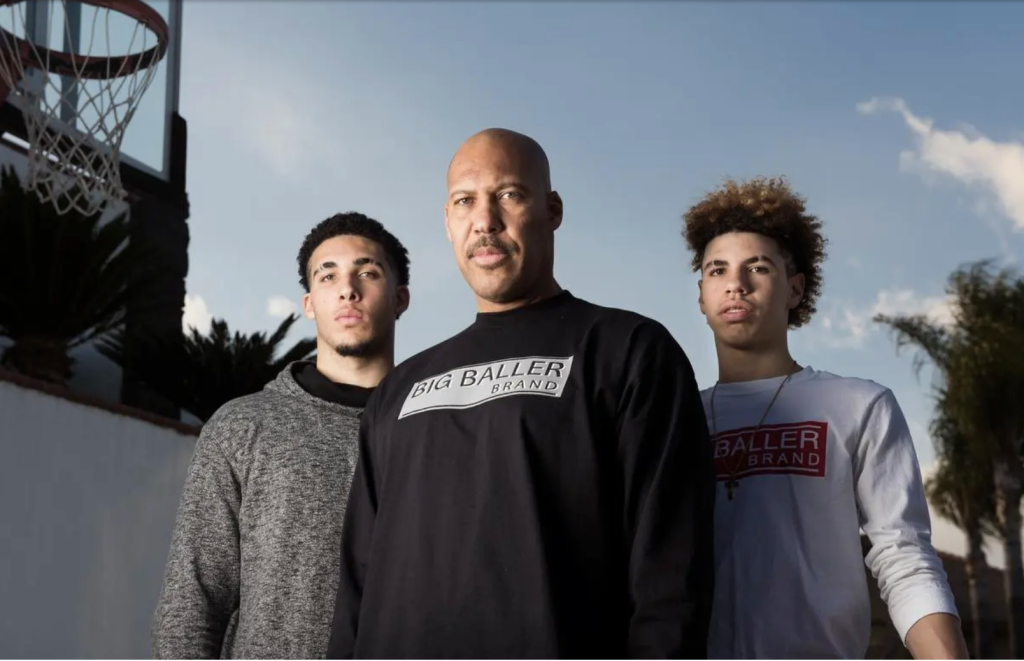
A Polarizing Parenting Style
LaVar Ball‘s parenting style is nothing short of polarizing. To his supporters, he is a marketing innovator and a fiercely dedicated father who pushed his sons to achieve their dreams. He often states that his sons’ success is a direct result of his guidance and belief from birth, claiming they were “three for three” in their journey to stardom. He sees himself as having provided the necessary foundation and motivation for their athletic success, ensuring they received early recognition.
However, critics often label him an overbearing father, suggesting he placed undue pressure on his sons and used their talents to promote his own brand. Nancy Armour of USA Today famously called him the “worst sports parent ever.” The debate centers on whether his aggressive promotion helped or hindered Lonzo, LaMelo, and LiAngelo.
While Lonzo and LaMelo have achieved NBA stardom, LiAngelo, despite his talents, has taken a different path, including a burgeoning music career. LaVar Ball himself believes that without his involvement, his sons wouldn’t be as well-known, arguing that the media’s perception that he hurts his sons is flawed. His approach offers unique lessons for families, particularly in competitive environments like New York, on the fine line between support and pressure in youth sports.
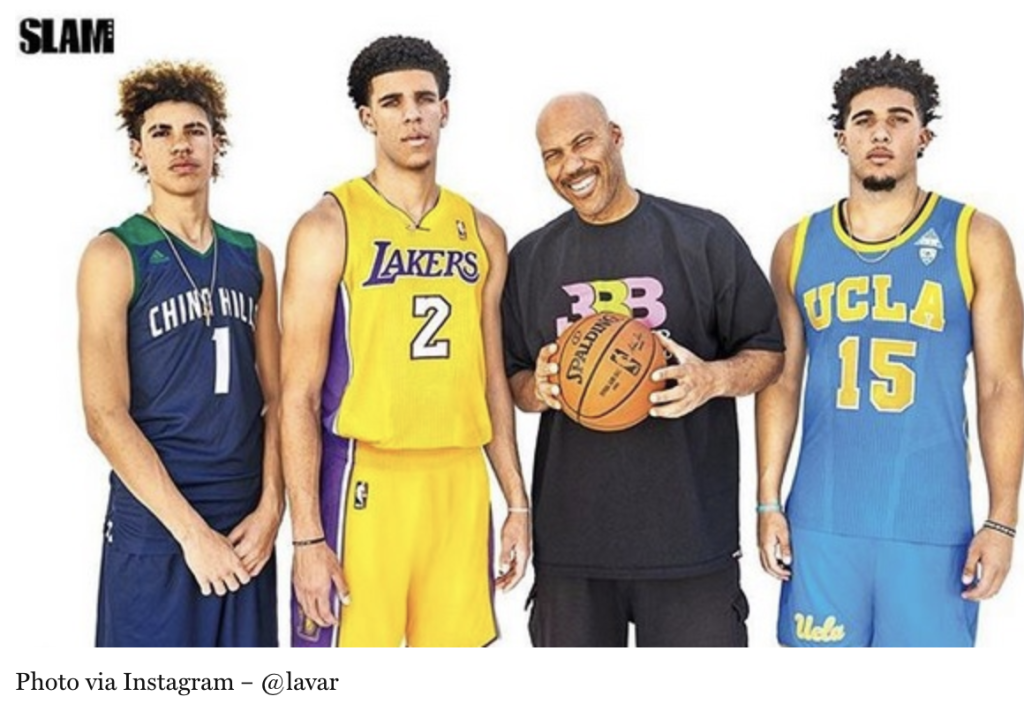
Overcoming Adversity: The Health of LaVar Ball
Beyond the controversies and the bold claims, LaVar Ball has faced profound personal challenges, demonstrating a resilience that often goes unnoticed amidst his public persona. His family has endured significant health issues, highlighting the importance of support systems.
In February 2017, his wife, Tina Ball, suffered a stroke, a difficult period that LaVar Ball steerd with determination and family unity. He often spoke about the strength Tina showed in her recovery, a testament to their bond.
More recently, LaVar Ball himself experienced a life-altering medical crisis. His right foot was amputated due to severe complications from diabetes, specifically an infection that spread through his blood. He was hospitalized for over a month, undergoing three surgeries and four blood transfusions. He admitted that the ordeal greatly impacted his mental health, making him question if it was “worth going through.” However, true to his “Big Baller” mentality, he expressed immense gratitude for his sons, Lonzo, LiAngelo, and LaMelo, stating, “My boys kept me rolling.” He views his situation as a realization of the importance of family support, declaring, “you’re lucky that you have family to get you through some stuff.”
Despite the amputation, LaVar Ball remains remarkably positive and resilient. He told SLAM magazine, “Don’t feel sorry for me,” and humorously noted, “My foot is gone, but my brain is still here.” He now advocates for regular health checkups, especially for the Black community, emphasizing that early intervention can prevent serious consequences. He believes his situation could have been prevented with proper attention to his diabetes. His recovery, marked by his characteristic humor and tenacity, continues to inspire, reminding us that even the biggest personalities face human vulnerabilities. You can read LaVar Ball’s own words in a candid interview in Slam magazine.
Frequently Asked Questions about LaVar Ball
As someone who has followed LaVar Ball‘s journey through New York’s media landscape and beyond, I often get asked the same questions about this remarkable figure. Let me address the most common curiosities about the man who changed how we think about athlete branding and family dynasties in sports.
What were LaVar Ball’s college basketball stats?
LaVar Ball‘s college basketball career tells an interesting story of perseverance across multiple institutions. At Washington State, where most people focus their attention, he averaged 2.2 points, 2.3 rebounds, and 1.0 assists per game over 26 games. His shooting percentages were 40.4% from the field and 45.0% from the free-throw line, playing about 11.5 minutes per game.
However, these numbers don’t tell the complete story. During his time at West Los Angeles College in the 1986-1987 season, LaVar Ball put up much more impressive numbers, averaging 22.2 points and 12.0 rebounds per game. He even recorded a career-high of 33 points and 18 rebounds against Porterville College. At Cal State Los Angeles in 1989-1990, he averaged 15.8 points and 8.9 rebounds.
These varying statistics show how LaVar Ball performed differently at various levels of college basketball, which perhaps explains his unwavering confidence in his athletic abilities.
What is the Big Baller Brand?
Big Baller Brand (BBB) represents LaVar Ball‘s boldest business venture and his attempt to revolutionize athlete endorsements. Founded by LaVar Ball and his wife Tina in 2016, the sports apparel company became famous for its audacious pricing strategy and family-first approach.
The brand’s most notorious product was the ZO2 signature shoe for Lonzo Ball, priced at $495, with autographed versions reaching $900. LaMelo’s MB1 shoes were priced at $395. LaVar Ball defended these prices by comparing BBB products to luxury brands, famously declaring that if you couldn’t afford them, you simply weren’t a “BIG BALLER!”
While the brand initially gained significant attention and made Lonzo the only NBA draft prospect to enter wearing his own brand, BBB faced serious challenges. Business disputes, particularly with partner Alan Foster, led to financial difficulties. Today, the brand’s website is no longer operational, and its products are largely unavailable, serving as both an inspiring example of entrepreneurial boldness and a cautionary tale about sustainable business practices.
Why was LaVar Ball’s foot amputated?
LaVar Ball‘s foot amputation represents one of the most serious challenges he’s faced, stemming from complications related to diabetes. His right foot was amputated due to a life-threatening infection that developed from his diabetic condition and spread through his bloodstream.
The medical crisis was severe, requiring over a month of hospitalization, three surgeries, and four blood transfusions. LaVar Ball has been remarkably open about how the experience affected his mental health, admitting he questioned whether it was “worth going through.”
True to his resilient nature, LaVar Ball has used this experience to advocate for better health awareness, particularly in the Black community. He emphasizes that his situation could have been prevented with proper attention to his diabetes and regular health checkups. Despite losing his foot, he maintains his characteristic optimism, telling reporters, “My foot is gone, but my brain is still here.”
His recovery has been supported by his sons Lonzo, LiAngelo, and LaMelo, whom he credits with keeping him motivated throughout this difficult period. This health journey has shown a more vulnerable side of the man known for his bold proclamations, resonating with families across New York and beyond who understand the importance of health advocacy and family support during challenging times.
Conclusion
LaVar Ball represents something far greater than basketball statistics or business ventures—he’s become a defining voice in how modern families can shape their own destiny in sports and entertainment. His journey from a college player averaging 2.2 points per game to becoming one of the most recognizable figures in sports culture shows us that sometimes the biggest impact comes from the boldest vision.
What makes LaVar Ball truly fascinating is his unwavering belief that families don’t have to accept the traditional path. When everyone said his sons needed major shoe deals, he created Big Baller Brand. When college basketball seemed like the only route, he founded the JBA. When critics said he was too involved, he doubled down on his approach. This kind of fearless thinking resonates deeply in New York City, where innovation and bold moves are celebrated.
His story offers profound lessons about resilience. Watching him face his recent health challenges—including the amputation of his foot due to diabetes complications—with characteristic determination reminds us that even the most confident personalities face real human struggles. Yet his response, telling reporters “My foot is gone, but my brain is still here,” perfectly captures the spirit that made him famous in the first place.
The cultural impact of LaVar Ball extends far beyond basketball courts. He forced conversations about athlete empowerment, family dynamics, and the power of personal branding that continue to influence how we think about sports and celebrity. His three sons—Lonzo and LaMelo thriving in the NBA, and LiAngelo finding his own path in music—stand as testament to his unconventional but ultimately successful approach to parenting.
From our perspective here at R. Couri Hay Columns, LaVar Ball‘s mastery of media attention and brand building offers invaluable insights into modern celebrity culture. His ability to stay relevant through controversy, triumph, and personal setback demonstrates the kind of strategic thinking that drives success in New York’s competitive media landscape.
His legacy isn’t just about basketball or business—it’s about showing that ordinary families can write extraordinary stories when they refuse to accept limitations. For anyone looking to make their mark in today’s complex media world, we invite you to Learn more about our publicity services in New York City. R. Couri Hay Columns—your trusted source for celebrity news and branding insights in New York City and beyond.

